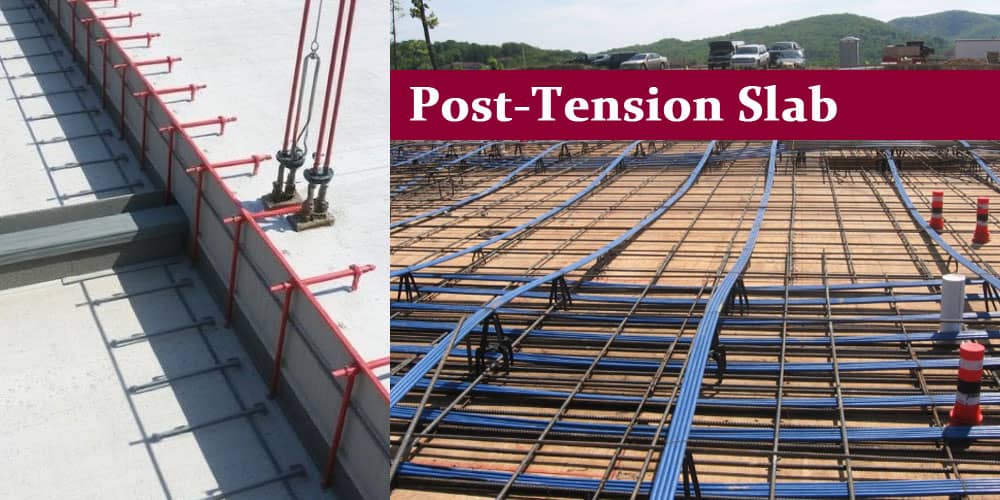What is the Purpose of a Post-Tension Slab?

Post-tension slabs are a widely used construction technique, offering enhanced structural performance and cost-effective building solutions. By incorporating high-strength steel tendons into concrete slabs, post-tensioning ensures better load management and minimizes cracking.
Understanding Post-Tensioning
Post-tensioning is a form of prestressed concrete. Unlike traditional reinforced concrete, which uses rebar for strength, post-tensioning involves tightening steel cables after the concrete has hardened. This process applies compressive force, enhancing the slab's ability to resist tension.
Key Purposes of Post-Tension Slabs
1. Increased Structural Strength
- Post-tension slabs provide greater load-bearing capacity compared to traditional slabs.
- The applied compressive force minimizes tensile stresses, improving resistance against cracking and deformation.
- Suitable for structures requiring large spans and heavy loads, such as bridges, parking garages, and industrial buildings.
2. Reduced Concrete Thickness
- One of the main advantages is the ability to design thinner slabs.
- Thinner slabs reduce the amount of concrete required, leading to cost savings.
- Structural integrity is maintained despite the reduced thickness.
3. Enhanced Crack Control
- By applying compression, post-tension slabs control shrinkage cracks.
- Cracks that do form are typically narrower and less noticeable.
- Provides a longer service life for structures, with reduced maintenance needs.
4. Improved Flexibility in Design
- Post-tensioning enables architectural freedom with longer spans and fewer columns.
- Ideal for open spaces such as shopping malls, theaters, and convention centers.
- Allows the creation of curved or unconventional shapes in architectural designs.
5. Cost and Time Efficiency
- Reducing material usage and labor leads to lower construction costs.
- Accelerated construction timelines as post-tension slabs often eliminate the need for complex reinforcement systems.
- Reduced reliance on temporary supports during construction.
Applications of Post-Tension Slabs
1. Residential Buildings
- Commonly used in multistory apartments and condominiums.
- Provides efficient floor plans with open living spaces.
2. Commercial and Industrial Structures
- Essential in warehouses and storage facilities that require large column-free spaces.
- Facilitates the accommodation of heavy machinery and equipment.
3. Parking Structures
- Post-tension slabs provide the necessary strength for multi-level parking garages.
- Enhanced durability against vehicular loads and environmental factors.
4. Bridges and Infrastructure
- Widely used in bridge decks and overpasses.
- Withstands dynamic loads from vehicles and minimizes long-term maintenance.
Construction Process of Post-Tension Slabs
1. Formwork and Reinforcement
- Formwork is erected to shape the concrete slab.
- Steel cables or tendons are placed in pre-designed positions.
2. Concrete Pouring
- Concrete is poured and left to cure while the tendons remain un-tensioned.
- Careful monitoring ensures no air pockets or inconsistencies form.
3. Post-Tensioning
- After achieving sufficient concrete strength, tendons are stressed using hydraulic jacks.
- The tensioned tendons are anchored, applying compressive force to the slab.
4. Grouting (If Required)
- In bonded post-tension systems, grout is injected to protect tendons from corrosion.
- Provides additional structural bonding between tendons and concrete.
Advantages of Post-Tension Slabs Over Traditional Slabs
- Reduced Material Use: Less concrete and steel are needed.
- Greater Span Capacity: Allows for wider and more open spaces.
- Minimized Foundation Requirements: Suitable for areas with poor soil conditions.
- Superior Crack Management: Enhanced resistance to cracking and shrinkage.
- Eco-Friendly Construction: Reduced carbon footprint due to lower material usage.
Potential Challenges and Solutions
- Initial Cost: Post-tensioning may incur higher upfront costs, but long-term savings through durability and low maintenance offset this.
- Skilled Labor Requirement: Requires specialized knowledge for tensioning operations, but training programs are readily available.
- Inspection Needs: Regular monitoring ensures the system remains effective over time.
Conclusion
Post-tension slabs offer a powerful solution for modern construction needs. From residential towers to expansive commercial complexes, these slabs provide exceptional structural integrity, flexibility in design, and cost efficiency. With proper planning and expert execution, post-tensioning continues to revolutionize the construction industry.
Please watch the following short video for Post-Tension Slab
